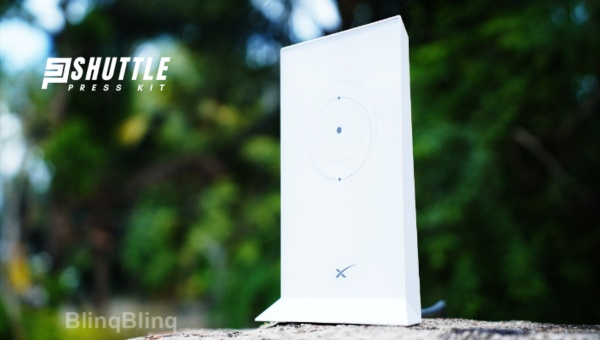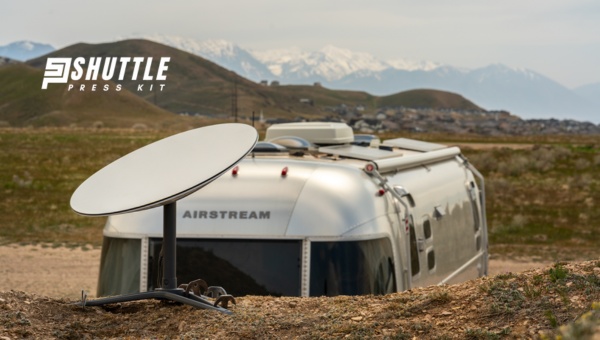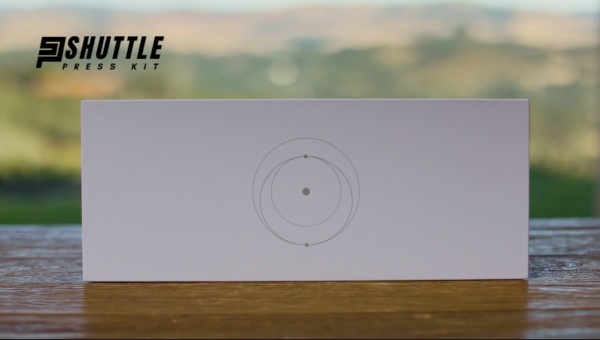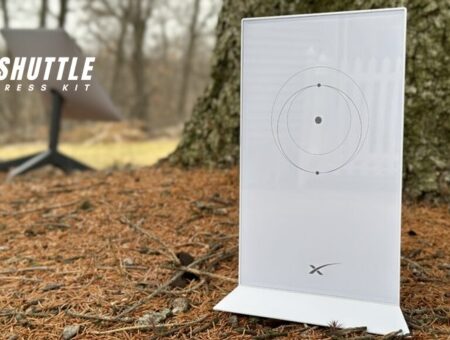Ever wondered, “Can You Install The Starlink Router Outside?” If you have, then you are not alone. This topic has been a subject of considerable debate among users of the Starlink network across the world. It’s more than just curiosity – it’s about finding a position that offers the best signal strength and stable internet connectivity for your needs.
To address your query directly – Technically, Yes. You can indeed set up your Starlink router outdoors. However, it is essential to keep in mind that while this setup is possible, it does come with certain considerations and potential drawbacks, such as changes in coverage range and possible weather interference, to name a few.
Analyzing Whether You Can Install The Starlink Router Outside
There’s been quite some buzz around the question: can you install the Starlink router outside? This choice heavily rides on multiple factors that need thoughtful consideration.

Let’s dive into each one separately to understand this dynamic comprehensively.
Probable Factors Determining Installation of the Starlink Router Outdoors
Every gadget has its own unique set of operational conditions, and routers are no different. In fact, they might be more sensitive than some of your other electronic devices. When it comes to installing a router outside, several key points come into play.
- Structural Compatibility: The structure and build of the Starlink router would be our primary concern. If it isn’t designed for outdoor installation, it may not function optimally in such an environment or might get damaged.
- Environmental Exposure: Outdoor elements can pose a significant threat to your devices’ longevity. Rain, dust or extreme temperatures could negatively impact the routers’ functionality.
- Heat Dissipation: All electronic devices produce heat while operating. Inside your house, this heat is distributed relatively easily without causing harm. But outside? That might not be the case.
- Signal Interference: External factors like other devices or walls could affect the signal strength and hence hamper its performance.
In evaluating these considerations related to “Can you install the Starlink router outside?” it’s pretty clear that each carries equal weightage. While indoor installation is evidently safer in terms of device longevity and performance efficiency, do these potential hurdles mean that you absolutely can’t go for outdoor installation?
Also Read: Guide to Stow Your Starlink: The Art of Satellite Setup
Factors to Keep in Mind When Installing a Starlink Router Outside
When tackling the question “Can You Install The Starlink Router Outside?” it isn’t as simple to answer as it may first appear.

Numerous factors need to be considered before making the decision. Let’s evaluate them one by one.
Weighing the Impact of Location
The location on your property where you plan to install the Starlink router can play a big part in its performance and functionality.
Some areas may have a strong signal, while others might be poor, negatively impacting your internet connection. Your home’s layout and nearby structures can also impede the WiFi signal, so where you place your router matters.
Understanding Weather Constraints
Another significant factor is weather conditions. Rain, snow, high winds, or extreme temperatures could potentially affect your router and disrupt its performance if it’s placed outside unprotected. Therefore, it is crucial to consider how local weather trends might impact your decision to install a Starlink router outdoors.
Weighing in on Wi-Fi/ Ethernet Connectivity
Installation of a router outdoors could have an effect not only on WiFi strength but also on what we call Ethernet connectivity; in other words, how devices like computers that are wired directly into the network function.
If these wires stretch outdoors, they may face exposure risks such as moisture or physical damage because they were not designed for outdoor use.
Abiding by Building Codes
Just like any exterior change to a building or house, installing an outdoor Starlink router needs consideration of local building codes, too!
Certain areas have regulations that restrict mounting electronics outside due to potential safety hazards that must be abided by. It’s always best practice to check with local authorities prior to installing anything outside.
Importance of Weatherproof Enclosure
Lastly but highly importantly, it is protecting your precious piece of tech from getting damaged! Choosing an appropriate weatherproof enclosure for protection is essential when planning to set up the Starlink router outside.
These safeguarding measures help protect routers from adverse weather conditions, and the added layer of protection prolongs the life of your device.
Also Read: How to Rent Starlink? Quick Guide for Seamless Connectivity
Addressing Cons Of Installing Your Starlink Router Outdoors
The question “Can you install a Starlink router outside?” has crossed many people’s minds, but before you embark on this challenging adventure and position your device in the great outdoors, let me illuminate some potential setbacks that may arise.
Impact on Coverage Range
Internet connectivity is a modern necessity we all depend upon. But deciding to install your router outdoors might lead to an irrational WiFi range. The coverage of an outdoor router can be unpredictable, especially for WiFi.
The range relies heavily on the line of sight without any obstructions. However, open spaces are not always free from buildings, trees, or hills, which can create a host of challenges in distributing stable internet throughout your area.
A Potential Security Hazard Awaits
Setting up your Starlink router outside exposes it to several risks and hazards, which we should take into account. Theft is a primary concern since anyone could easily snatch it away unbeknownst to you.
On top of that, it is also prone to physical damage because it falls prey to various elements, such as animals or accidental hits by passers-by.
Contemplating Over Decreased Speeds
Can you install the Starlink router outside? Yes! But will outdoor installation affect the internet speed? Quite possibly! Environmental factors play a crucial role here – heat exposure can cause components inside the router to work less efficiently while cold temperatures can freeze and break them down, leading consequently to decreased speeds.
Lack Of Convenient Ethernet Access
Positioning your Starlink Router outside does come with some drawbacks, considering access issues.
Particularly relevant is that Ethernet ports might become difficult to reach when needed, which would limit direct cable connections for devices requiring higher bandwidth usage than what WiFi offers.
Realizing Power Plug Accessibility Issues
Being conscious about power plug availability is vital when considering whether you can establish the Starlink router outside or not. Routers need a power supply close by, and it’s a rarity that power sockets are conveniently placed outside.
So keep in mind this arrangement might require you to devise additional setups like extension cords or outdoor outlets, which add up to your work.
Indeed, knowing the potential concerns of choosing an external setup further helps you make an informed decision on where best to position your router.
Always remember, understanding both the benefits and drawbacks can assist you in achieving optimal internet performance regardless of whether you decide to install your Starlink router inside or brave the great outdoors!
Also Read: Starlink Mounting Options – Your Ultimate Installation Guide
Evaluating Workable Alternatives For Outdoor Installation Of The Starlink Router
One question pops up in most people’s minds: Can you install the Starlink router outside?

Although it is doable, there are safer, more practical options that let you reap all the benefits without compromising on security and efficiency.
Powerline a Secondary Router or Access Point Serving as an Option
Firstly, let’s talk about powerline adapters. These are blessings for anyone dealing with routers and internet connections. When considering whether I could install the Starlink router outside or not, a powerline adapter quickly became my best ally.
So, what does a powerline adapter do? It uses electrical wiring already installed in your home to transmit internet data. This means wherever there’s an outlet in your house, you can have an internet connection!
To set it up couldn’t be easier. You just plug one adapter into an outlet near your router and connect them using an Ethernet cable. Then plug in another adapter wherever you want the internet and connect via Ethernet to your device or another router or access point.
This effectively eliminates the need for having to install the Starlink router outside altogether!
The second option that came to mind is installing a secondary router or access point at any place within your home needing better coverage. It works like magic because while it extends coverage significantly, it ensures no decrease in speed compared to having one single overloaded network working over time.
Utilizing Extension Cables to Your Advantage
Secondly, extension cables come as extremely beneficial when aiming for those distant corners at home where signals usually weaken substantially.
By adding these easy-to-install helpers, I was able to keep my beloved Starlink router safely indoors while enjoying strong connections across all nooks and crannies of my living space area without thinking twice about whether I could install the Starlink Router outside again!
I opted for industrial-grade Ethernet cables that ensure top-notch signal transfer with zero signal drops, even over large distances. These options ultimately save you, putting the costly router at potential risk of being stolen or damaged by weather elements.
In the end, there are times when installing a router outdoors seems like the easiest solution to your connectivity problems.
But it’s always wise to weigh in other possible alternatives before making a hasty decision that could potentially adversely affect your Starlink Router’s lifespan and performance. Being sensible during this process is essential because, once done incorrectly, attempting to reverse these steps can be a tedious task.
Also Read: Slow Starlink Speeds? Boost Your Connectivity with Solutions
FAQs
Can I use Starlink outdoors?
Yes, theoretically the Starlink router can be used outside. However, it must be protected from adverse weather conditions and you need to take factors like wifi strength, building codes, and power socket accessibility into consideration.
Does the Starlink router need to be upright?
Yes, it is recommended that the Starlink router is kept upright for optimal performance. This allows for better heat dispersion and stronger signal reception.
Can Starlink router be mounted on wall?
Although there’s no definitive yes or no answer, most routers are designed to sit flat or mount on a wall. If deciding to mount your Starlink router on a wall, make sure it won’t have an effect on signal quality.
Where should I put my Starlink router?
Your router should ideally be placed at the center of your home or office for maximum coverage range. Avoid locations near other electronics that could interfere with signals such as wireless phones or microwaves.
Also Read: Can You Get A Static IP From Starlink? Find Out Here!
Conclusion
In the final analysis, we must admit that we can indeed install the Starlink router outside, but it comes with its own set of challenges. The location, weather conditions and WiFi/ Ethernet connectivity are all significant factors to consider for optimal operation of your Starlink router.
Furthermore, outdoor placement might entail a need to comply with specific building codes and ensure the usage of a weatherproof enclosure.
Nevertheless, this choice may present issues like a decreased coverage range and internet speed due to various external environmental factors. It also poses risks in terms of safety-related issues such as theft or more extensive physical damage.
